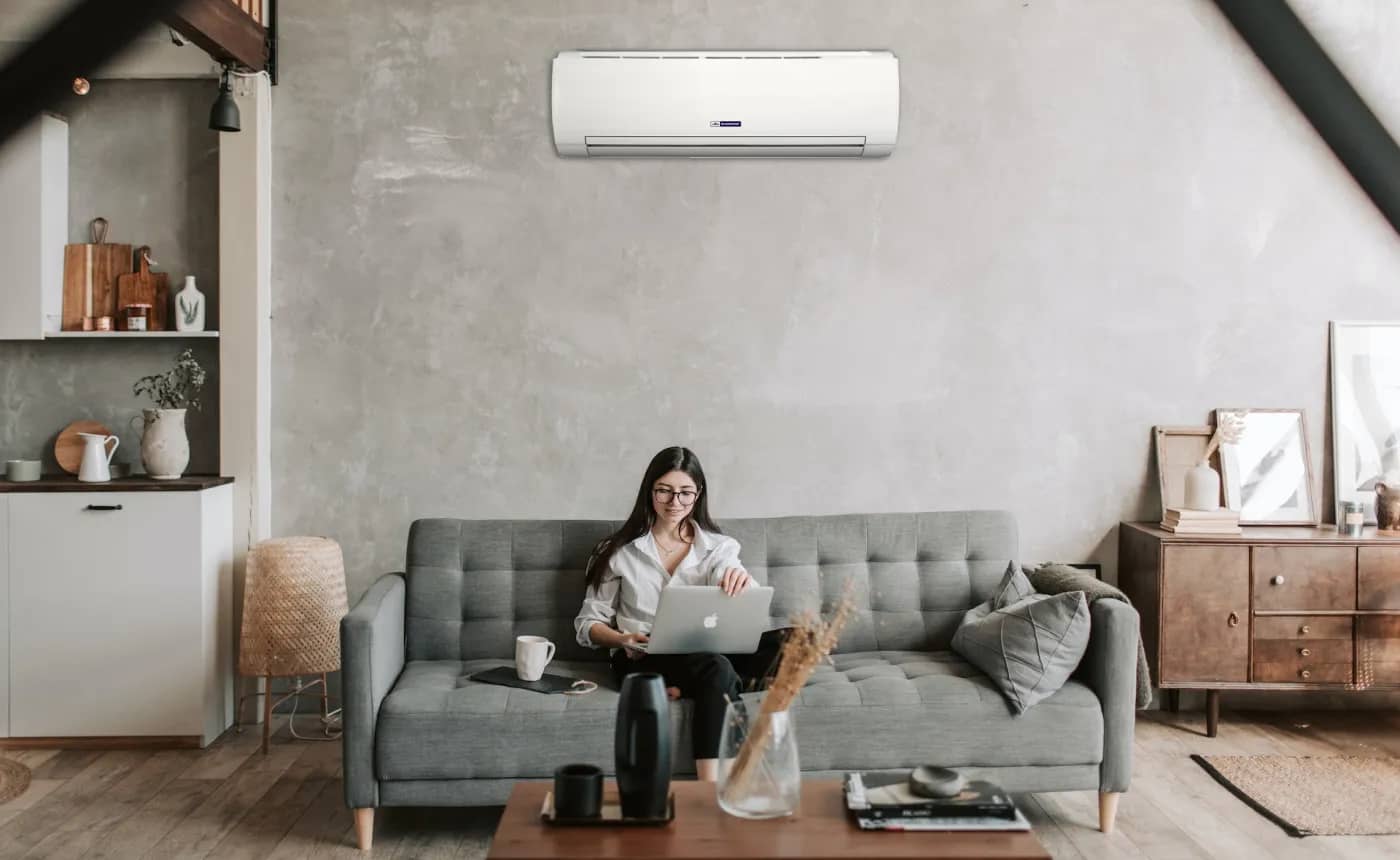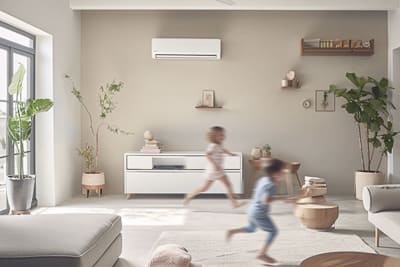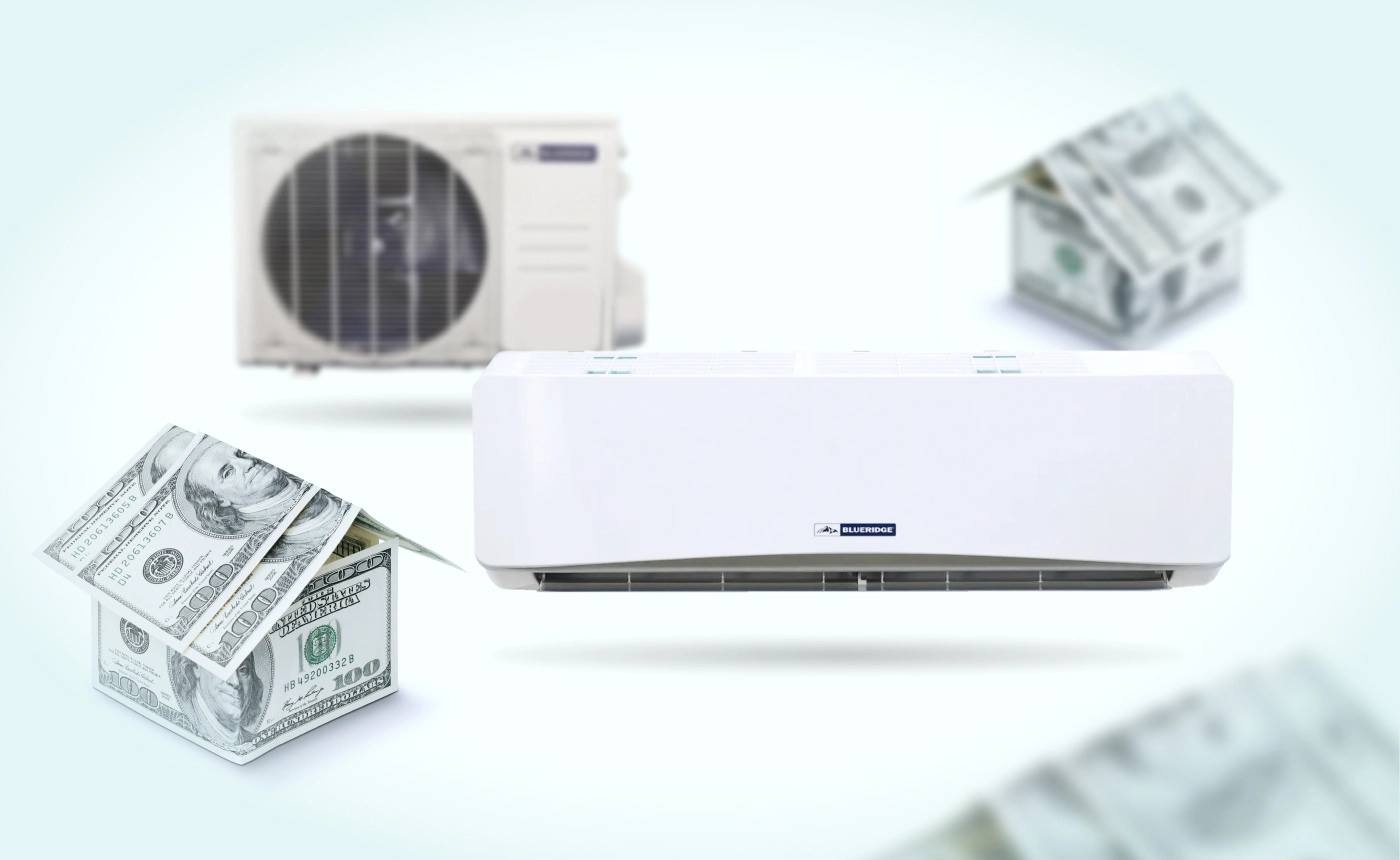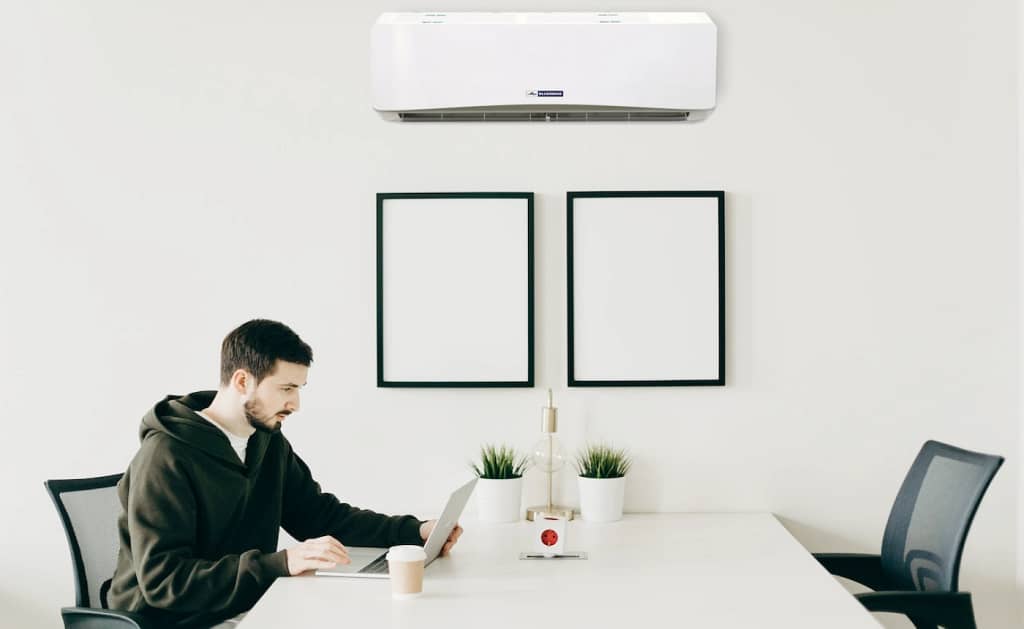
When shopping for a new HVAC system, consider the pros and cons of a ductless mini-split system vs. a central forced-air system. These two distinct approaches to heating and cooling a home, office building, or other type of space each have their own features and considerations.
The primary difference lies in their distribution method.
Mini-splits consist of an outdoor unit connected to individual indoor air handlers, allowing for zone-specific temperature control. This design eliminates energy loss associated with ducts, enhancing efficiency and reducing utility bills. Moreover, the absence of ducts prevents allergens and contaminants from circulating throughout the space, contributing to better indoor air quality.
In contrast, central air systems rely on a network of ducts to distribute heated or cooled air throughout the building.
While central systems have consistent temperature control, they can be less energy-efficient due to duct-related losses. Additionally, if not properly maintained, ducts can become breeding grounds for dust, mold, and allergens.
Considering installation, ductless mini-splits are easier to retrofit into existing spaces, requiring minimal disruption and cost. In contrast, central air systems may require extensive ductwork installation or modifications.
Ultimately, the decision to install a mini-split or central air system will depend on factors such as space layout, budget, energy efficiency goals, and personal preferences.
While ductless mini splits excel in energy efficiency and individualized comfort, central forced air systems provide more consistent temperature regulation across larger areas. Understanding the differences helps you make an informed decision that aligns with your heating and cooling needs.
Mini-Split vs. Central Air: Top 6 Considerations
A ductless mini-split and a central air conditioning system are two distinct types of HVAC solutions, each with its own characteristics and advantages.
Understanding their differences can help you make an informed decision based on your needs and preferences.
1. Installation and Ductwork
Mini-Split System: Mini-splits, also known as ductless mini-split systems, do not require ductwork for air distribution.
They consist of indoor units (also known as mini-split air handlers) and outdoor units (often known as mini-split heat pumps) connected by refrigerant lines and electrical wiring. This eliminates the need for extensive duct installation and modifications.
Central Air Conditioning System: Central air conditioners use ductwork to distribute cooled air throughout the building. If your property doesn’t have existing ducts, their installation can be complex, time-consuming, and costly.
2. Zoning and Customization
Mini-Split System: Mini-splits offer zoned comfort capabilities, allowing you to set different temperatures in individual zones or rooms.
Each indoor unit has a thermostat and controls, enabling personalized comfort and energy savings by conditioning only the areas that are in use.
Central Air Conditioning System: Central air conditioning systems typically cool the entire building uniformly, leading to energy wastage in unoccupied areas. Zoning is less precise, relying on manually adjusting dampers within the ductwork.
3. Energy Efficiency
Mini-Split System: Mini-split air conditioners are known for their energy efficiency due to features like inverter technology and high SEER (Seasonal Energy Efficiency Ratio) ratings.
They deliver consistent comfort while consuming less energy compared to traditional systems.
Central Air Conditioning System: While central AC systems can be efficient, their energy consumption may be influenced by duct losses and the cooling of unused areas. Proper duct insulation and sealing are essential to maintain efficiency.
4. Flexibility in Installation
Mini-Split System: Mini-splits offer flexible installation options.
Indoor units can be wall-mounted, ceiling-recessed, floor-standing, or ducted, accommodating various room layouts and preferences.
Central Air Conditioning System: Central AC systems require space for ductwork and a sizeable indoor air handler. This can limit installation options, especially in properties with limited or inaccessible attics or crawl spaces.
5. Visuals and Aesthetics:
Mini-Split System: Mini-splits are known for their unobtrusive indoor units that blend seamlessly with interior decor.
Since each zone or room only has to hold one indoor air handling unit (and there are many strategies for hiding ductless mini-split systems), mini-splits are less visually disruptive than traditional supply and return vents in central AC systems. Outdoor and indoor units can easily be placed in ways that blend in with the surroundings.
Central Air Conditioning System: Central AC systems rely on visible supply and return vents that can impact the aesthetics of your interior spaces.
6. Retrofitting:
Mini-Split System: Mini-splits are an excellent choice for retrofitting existing spaces without ductwork.
They provide a solution for older homes or buildings that lack central HVAC systems.
Central Air Conditioning System: Retrofitting a central AC system in older properties may involve extensive modifications to accommodate ductwork, making it a complex and costly endeavor.

When it comes to the differences between ductless mini-split systems and traditional HVAC systems, it’s easy to see the advantages a ductless mini-split air conditioner can offer.
The choice between the two depends on factors such as your property’s layout, cooling requirements, budget, and your desire for personalized comfort and energy efficiency.

The 10 Best Ways to Get the Most Out of Mini-Split Air Conditioning Systems
Knowing the ways in which a ductless mini-split is a better way to cool and heat a space is one thing — but knowing how to keep a mini-split in optimal condition is equally important.
Proper maintenance and care are essential to ensuring that ductless mini-split systems continue to deliver efficient and reliable performance, no matter the environment or their age.

By following a few key steps, you can not only extend the lifespan of your ductless HVAC system, but you can also maximize its cooling and heating capabilities, leading to more energy efficiency and more money in your pocket.
Let’s delve into the 10 essential tips that will help anyone achieve optimal performance from mini-split cooling and heating systems while also making the most of a ductless mini-split investment.
- Regularly Clean Filters and Coils: Dust and debris can accumulate on filters and coils, obstructing airflow and reducing efficiency. Regularly clean or replace air filters and inspect coils to ensure unrestricted airflow and optimal heat exchange. Make sure to do this for both your indoor and outdoor unit (or units.)
- Scheduled Professional Maintenance: Regular professional maintenance by certified technicians helps identify and address potential issues before they escalate. A thorough inspection, cleaning, and system tune-up can ensure efficient operation and prolong the system’s lifespan.
- Monitor Refrigerant Levels: Proper refrigerant levels are crucial for optimal cooling and heating performance. Low refrigerant levels can lead to reduced efficiency and potential damage to the compressor. Regularly check and maintain the correct refrigerant levels.
- Check and Tighten Connections: Inspect electrical connections, fittings, and wiring to ensure they are secure. Loose connections can lead to electrical issues, inefficiency, and potential safety hazards.
- Clear Surrounding Area: Ensure that the outdoor unit is clear of debris, vegetation, and any obstructions. Proper airflow is essential for efficient heat exchange and system operation.
- Use Zoning Wisely: Take advantage of the zoning capabilities of ductless minisplits to set different temperatures for different zones or rooms. Avoid conditioning unoccupied areas to save energy and optimize comfort.
- Keep Thermostats at Optimal Settings: Set temperature levels to a comfortable but not excessively low or high range. Extreme settings can strain the system and increase energy consumption.
- Utilize Smart Features When Possible: If your mini -split system has smart features, such as remote control or smartphone apps, use them to adjust settings and schedules conveniently. Smart features help optimize comfort and energy efficiency.
- Ensure Proper Insulation: Properly insulate your home or space to prevent heat transfer through walls, ceilings, and windows. Adequate insulation reduces the load on your min-split system and maintains consistent indoor temperatures.
- Upgrade Outdated Units: If your mini-split system is outdated or less energy-efficient, consider upgrading to a newer model with advanced technology and higher SEER ratings. Newer systems offer better performance and energy savings.
By following these 10 strategies, you can ensure the optimal performance, efficiency, and longevity of your ductless mini-split system, enhancing your comfort and saving on energy costs over time.
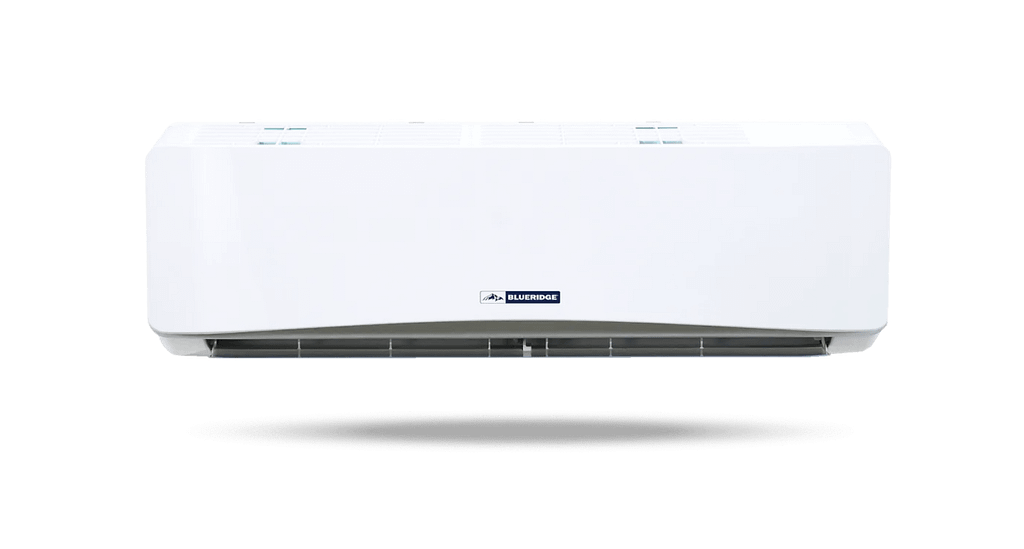
When You’re Ready to Commit, Call On Alpine Home Air Products to Help
Whether you are thinking of installing a new ductless mini-split system or have one that is in need of some maintenance or repair, Alpine Home Air Products stands as your trusted partner.
Our team of experienced professionals is well-versed in all aspects of ductless mini-split technology, from installation to maintenance and beyond.

With over 20 years of experience in the HVAC industry, Alpine is committed to high-quality products and excellent customer satisfaction.
Whether you need routine maintenance, expert advice, or assistance in selecting the right mini-split system for your specific needs, we’re here to provide top-notch service and guidance. Contact us today to discover how we can help you make the most of your ductless mini-split system and enjoy a more comfortable and efficient living environment for years to come!

